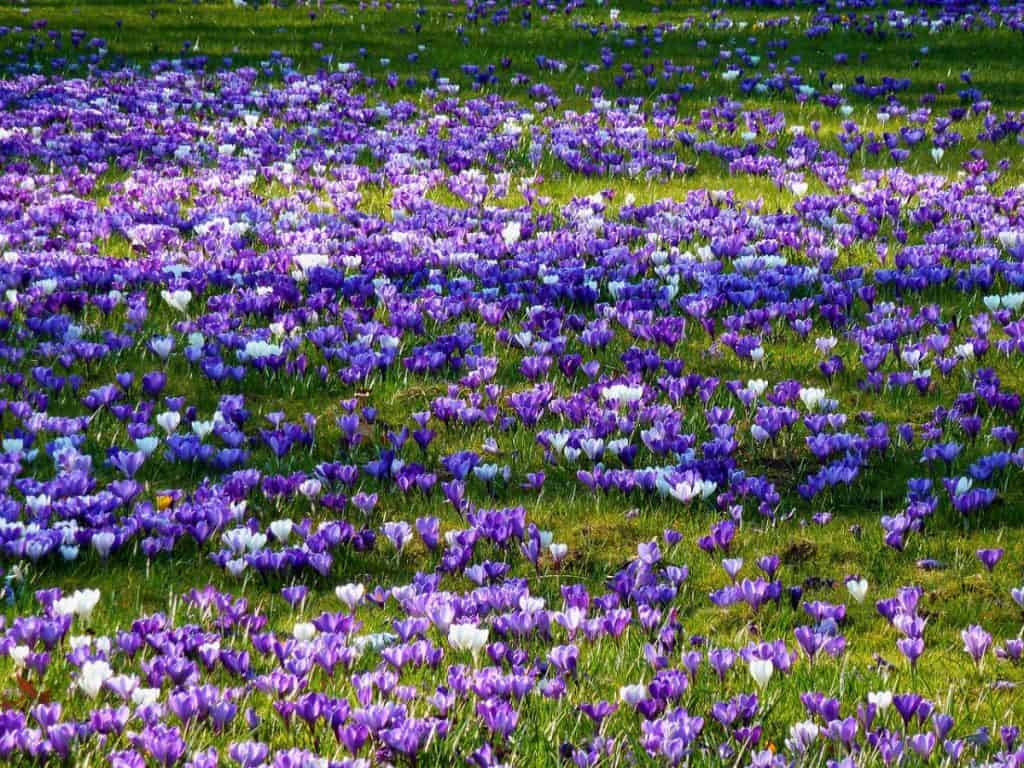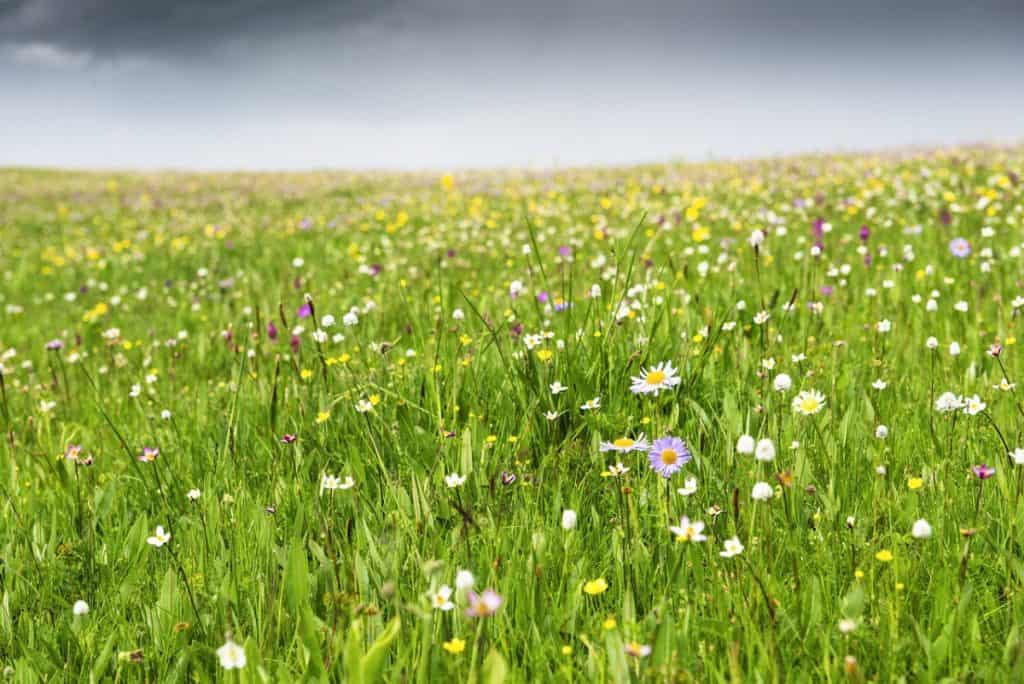Wildflowers can be found in almost any grassy situation. Hedgerows, rough pastures, village greens, golf courses, and the grassy borders of disused railway lines provide a home for an interesting variety of species.
Grassland is a very diverse habitat. The variety of conditions under which it is formed and managed produces greatly differing selections of wildflowers. Grassland on chalk or limestone is much richer in species than in acidic soil. The length of the grass also directly influences the type of flowers found there.
If you want to know more about grassland flowers, please read on.

Plants of Long Grass
If the grass is fairly long, there are likely to be fewer species present because the smaller flowers are choked. Tall pioneer species such as thistles grow best in the long grass.
Thistles belong to the Compositae family, along with daisies, knapweed, and dandelions, while on chalk or limestone soils you may come across musk thistle. The fragrant musk-like scent of its flowers gives this species its name.
The musk thistle is readily identified by its large pinkish-purple flower heads, which hang down under their considerable weight, giving them an alternative name of drooping thistle. Knapweeds, close relatives of the thistles, grow in hedgerows and the long grass of rough pasture.
They differ from thistles in that the edges of the leafy bracts surrounding each flower head are thin and papery instead of drawn out into sharp prickles. The greater knapweed has green bracts, while the lesser knapweed is blackish-brown. Both species are often known as hardheads.
Clovers and Vetch
Where the grass is a little shorter, you will find the members of the pea family (Leguminosae). The peas, beans, lupins, and laburnums often found in our gardens also belong to this family.
Red clover is a familiar grassland flower, and the rarer zig-zag clover, which is often confused with it, favors the same habitat.
Zig-zag clover owes its name to the zig-zag growth of its stems, and it can be recognized by the noticeably flattened head of flowers, which is a much darker red than that of the red clover. It can be found in dry pastures and bushy places.
Also closely related to each other are the white or Dutch clover and the less common alsike clover. The latter, introduced as a crop, is usually found as a weed growing in cultivated land along roadsides.
It differs from white clover as it never creeps along the ground. Its tall, branched stems may reach a height of 60cm (2ft). It can be recognized by the strong, pinkish tinge to the otherwise white flowers that grow more noticeable as they fade.
A sunny, grassy bank is the preferred home of the wild licorice or milk vetch. Although this is not the species from which commercial licorice is obtained, a sweet juice was extracted from its roots and used to flavor drinks.
It is a woody straggling perennial and can be distinguished easily from all the other vetches and peas by the oval heads of large, short-stalked, greenish-cream flowers and equally large pinnate leaves.
Plants on Turf
Regular mowing on golf courses and grazing by rabbits results in a short, dense turf that usually produces a wide variety of small flowers, some of which are characteristic downland species.
One of these, fairy flax, has slender, thread-like stems, a few inches high, and the plant wouldn’t be seen if it didn’t have loosely branched heads of small white flowers.
Equally difficult to see is the dwarf or stemless thistle. Unlike other thistles, this species rarely has a stem, and its smooth flower heads arise directly from a basal rosette of prickly leaves.
It grows in dry, lime-rich soils and has a deep tap-root which helps the plant to survive through severe periods of drought.
Eyebright is another typical plant that can be found. Plant infusions were once used to treat eye infections. There are about 20 species of eyebright and 60 hybrids, but the one you are most likely to see is the widely distributed common eyebright.
The plant is sometimes parasitic on the roots of grasses, although it does produce food by the process of photosynthesis.
Thistle structure
The head of a thistle is not a single flower but is made up of tiny individual florets packed tightly onto the flattened head or receptacle of the stem.
Each floret is a long tube of five narrow petals containing five male pollen-bearing stamens. The heads of the stamens fuse to form a hollow column around the single female style.
The stigma protrudes from the tube of petals to catch the pollen from visiting insects. After pollination, a one-seeded fruit is formed at the base, and when mature, a feathery outgrowth or pappus provides each fruit with its parachute.

Plants of Wasteland
A hard, compacted surface, such as that found in many wasteland areas, tends to create a thinly vegetated grassland habitat with its characteristic flora.
Weld, also known as dyer’s rocket, is a plant found in wasteland. Similar in appearance to the wild mignonette, it is a tall, stiff plant with a long narrow spike of greenish flowers.
The whole plant can be boiled to a beautiful yellow dye, and it was very popular before the introduction of artificial dyes.

